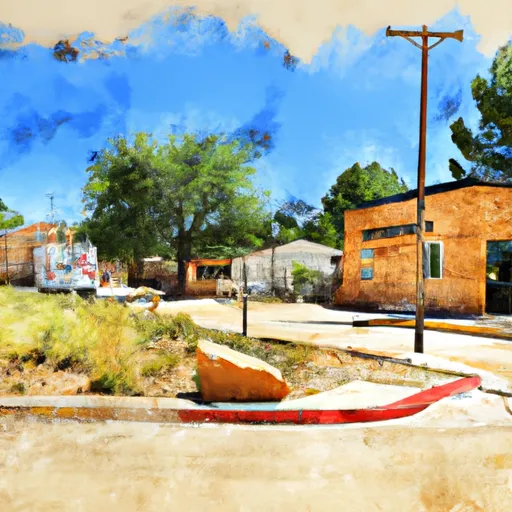-
 Snoflo Premium
Snoflo Premium
Get unlimited access to all our content
With no Ad interruptions! - Start Your Free Trial Login with existing account
Mayer
Eden Index
Climate
9.0
•
Recreation
4.8
•
Community
1.6
•
Safeguard
5.7/10

Mayer, Arizona is a small town located in Yavapai County, nestled in the central part of the state. The climate in Mayer is characterized by hot summers and mild winters. Summers can be scorching, with temperatures regularly exceeding 100°F (37°C), while winters are relatively mild, with daytime temperatures averaging around 60°F (15°C).
Hydrology constituents in Mayer are mainly influenced by the Agua Fria River, which runs through the town. The river serves as a vital water source for the area, supporting local vegetation and wildlife. Additionally, several creeks and washes can be found in the region, contributing to the hydrological system.
Mayer offers a variety of outdoor recreation opportunities. The surrounding natural landscapes, including the nearby Bradshaw Mountains, provide ample opportunities for hiking, camping, and wildlife viewing. The Agua Fria National Monument, located just north of Mayer, offers stunning scenic trails and opportunities for birdwatching and photography. Anglers can enjoy fishing in the Agua Fria River, which is known for its diverse fish population. Additionally, off-roading enthusiasts can explore the numerous trails in the area, including the popular Mayer to Crown King trail. Overall, Mayer provides an ideal setting for outdoor enthusiasts seeking to experience the beauty of Arizona's natural landscapes.
What is the Eden Index?
The Snoflo Eden Index serves as a comprehensive rating system for regions, evaluating their desirability through a holistic assessment of climate health, outdoor recreation opportunities, and natural disaster risk, acknowledging the profound impact of these factors on livability and well-being.
Climate Health Indicator (CHI): 9.0
Mayer receives approximately
406mm of rain per year,
with humidity levels near 46%
and air temperatures averaging around
17°C.
Mayer has a plant hardyness factor of
8, meaning
plants and agriculture in this region tend to thrive here all year round.
By considering the ideal temperature range, reliable water supplies, clean air, and stable seasonal rain or snowpacks, the Climate Health Indicator (CHI) underscores the significance of a healthy climate as the foundation for quality living.
A healthy climate is paramount for ensuring a high quality of life and livability in a region, fostering both physical well-being and environmental harmony. This can be characterized by ideal temperatures, reliable access to water supplies, clean air, and consistent seasonal rain or snowpacks.
Weather Forecast
Streamflow Conditions
Lower Gila-Agua Fria
Area Rivers
Lower Gila-Agua Fria
Snowpack Depths
Lower Gila-Agua Fria
Reservoir Storage Capacity
Lower Gila-Agua Fria
Groundwater Levels
Recreational Opportunity Index (ROI): 4.8
The Recreational Opportunity Index (ROI) recognizes the value of outdoor recreational options, such as parks, hiking trails, camping sites, and fishing spots, while acknowledging that climate plays a pivotal role in ensuring the comfort and consistency of these experiences.
Access to outdoor recreational opportunities, encompassing activities such as parks, hiking, camping, and fishing, is crucial for overall well-being, and the climate plays a pivotal role in enabling and enhancing these experiences, ensuring that individuals can engage in nature-based activities comfortably and consistently.
Camping Areas
| Campground | Campsites | Reservations | Toilets | Showers | Elevation |
|---|---|---|---|---|---|
| Agua Fria National Monument Dispersed | None | 3,186 ft | |||
| Lake Pleasant | 150 | 1,830 ft | |||
| Kentuck Springs | 15 | 6,016 ft | |||
| Thousand Trails Rd Dispersed | None | 3,461 ft | |||
| Powell Springs | 10 | 5,301 ft | |||
| Potato Patch | 24 | 6,956 ft | |||
| Mingus Mountain | 25 | 7,645 ft | |||
| Hazlett Hollow | 15 | 5,947 ft | |||
| Cave Creek Rec Area | 38 | 1,935 ft | |||
| Dead Horse Ranch State Park | 127 | 3,323 ft |
Catastrophe Safeguard Index (CSI):
The Catastrophe Safeguard Index (CSI) recognizes that natural disaster risk, encompassing floods, fires, hurricanes, and tornadoes, can drastically affect safety and the overall appeal of an area.
The level of natural disaster risk in a region significantly affects safety and the overall livability, with climate change amplifying these risks by potentially increasing the frequency and intensity of events like floods, fires, hurricanes, and tornadoes, thereby posing substantial challenges to community resilience and well-being.
Community Resilience Indicator (CRI): 1.6
The Community Resilience Indicator (CRI) recognizes that education, healthcare, and socioeconomics are crucial to the well-being of a region. The CRI acknowledges the profound impact of these elements on residents' overall quality of life. By evaluating educational resources, healthcare accessibility, and economic inclusivity, the index captures the essential aspects that contribute to a thriving community, fostering resident satisfaction, equity, and social cohesion.

